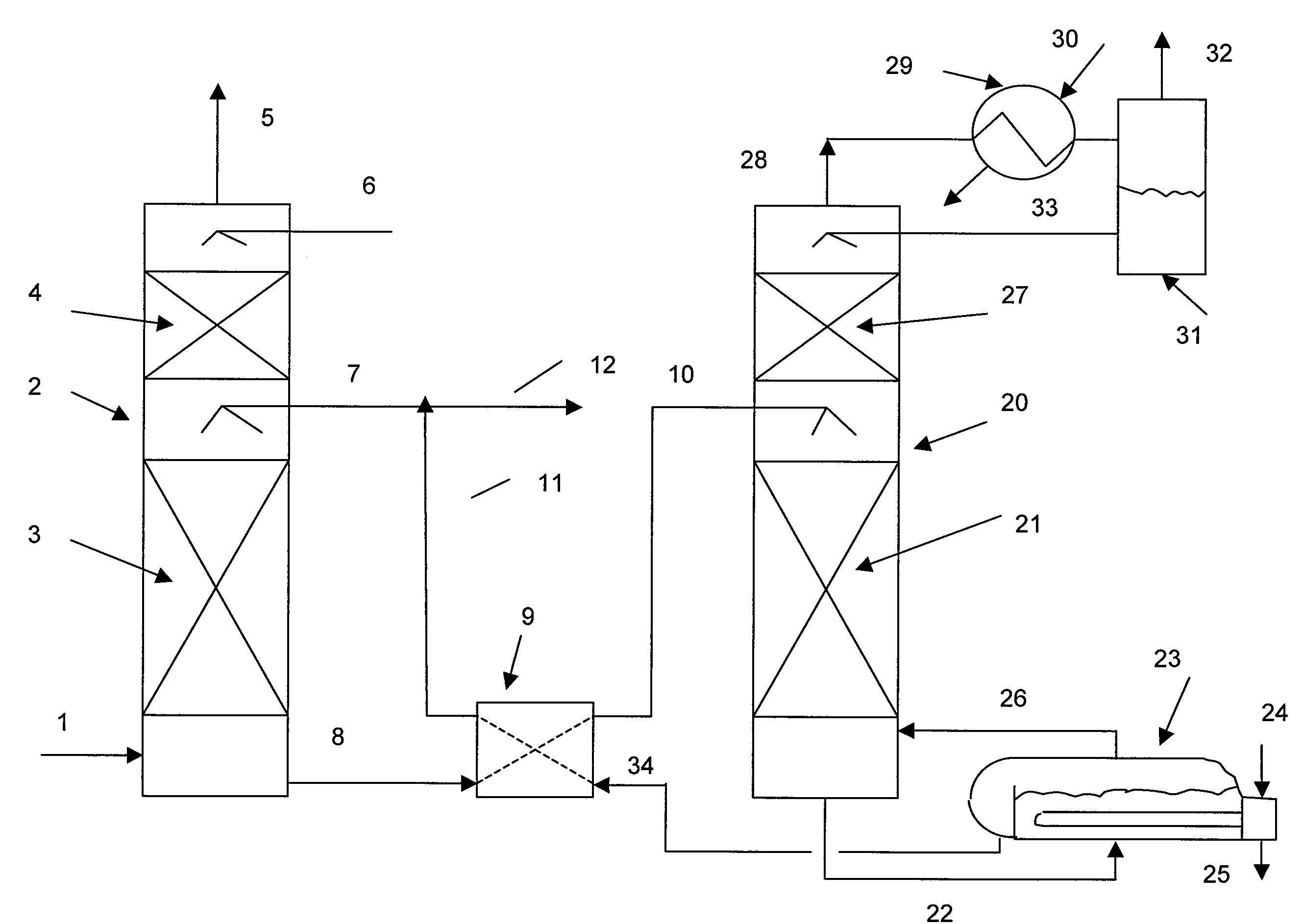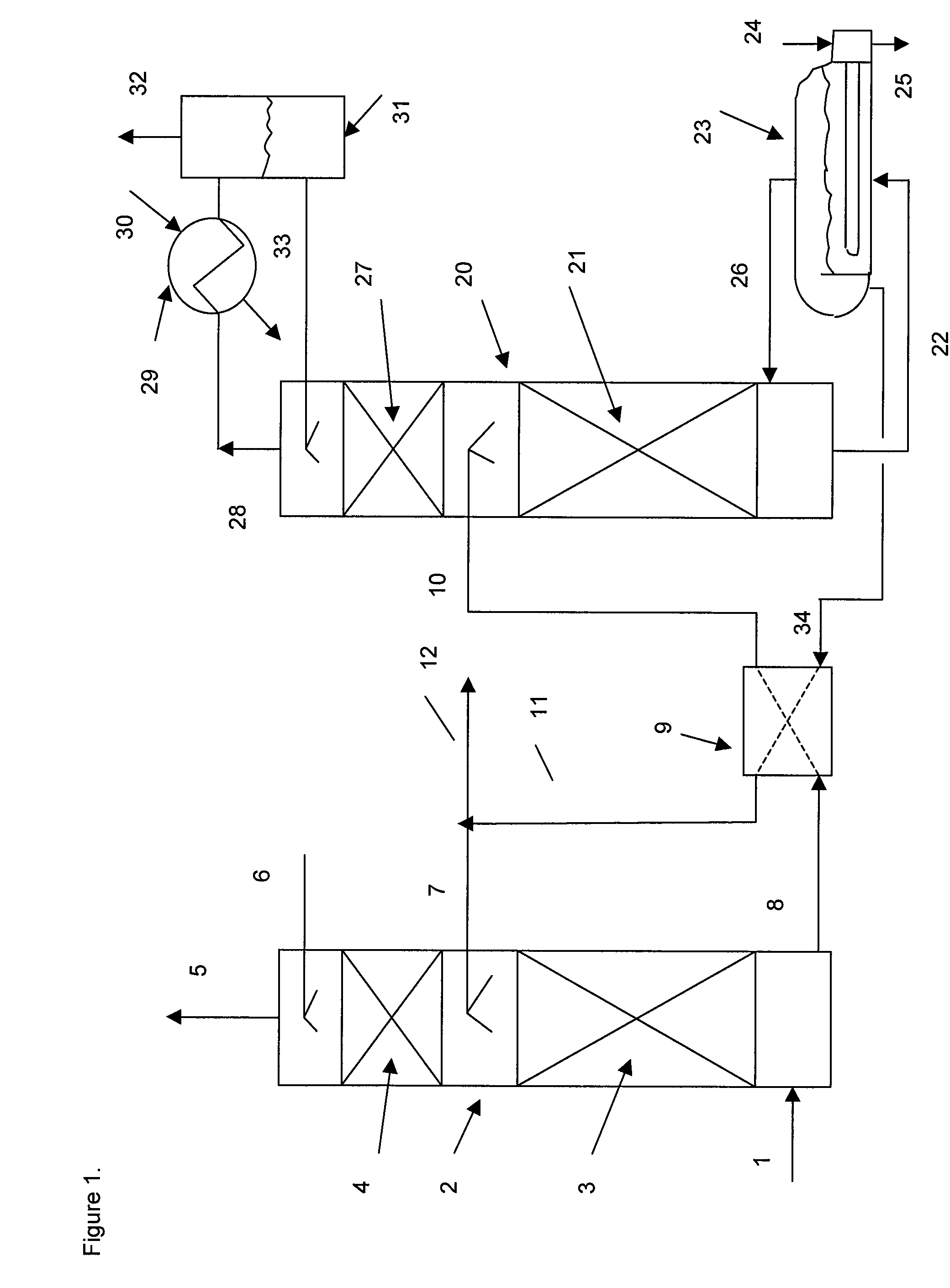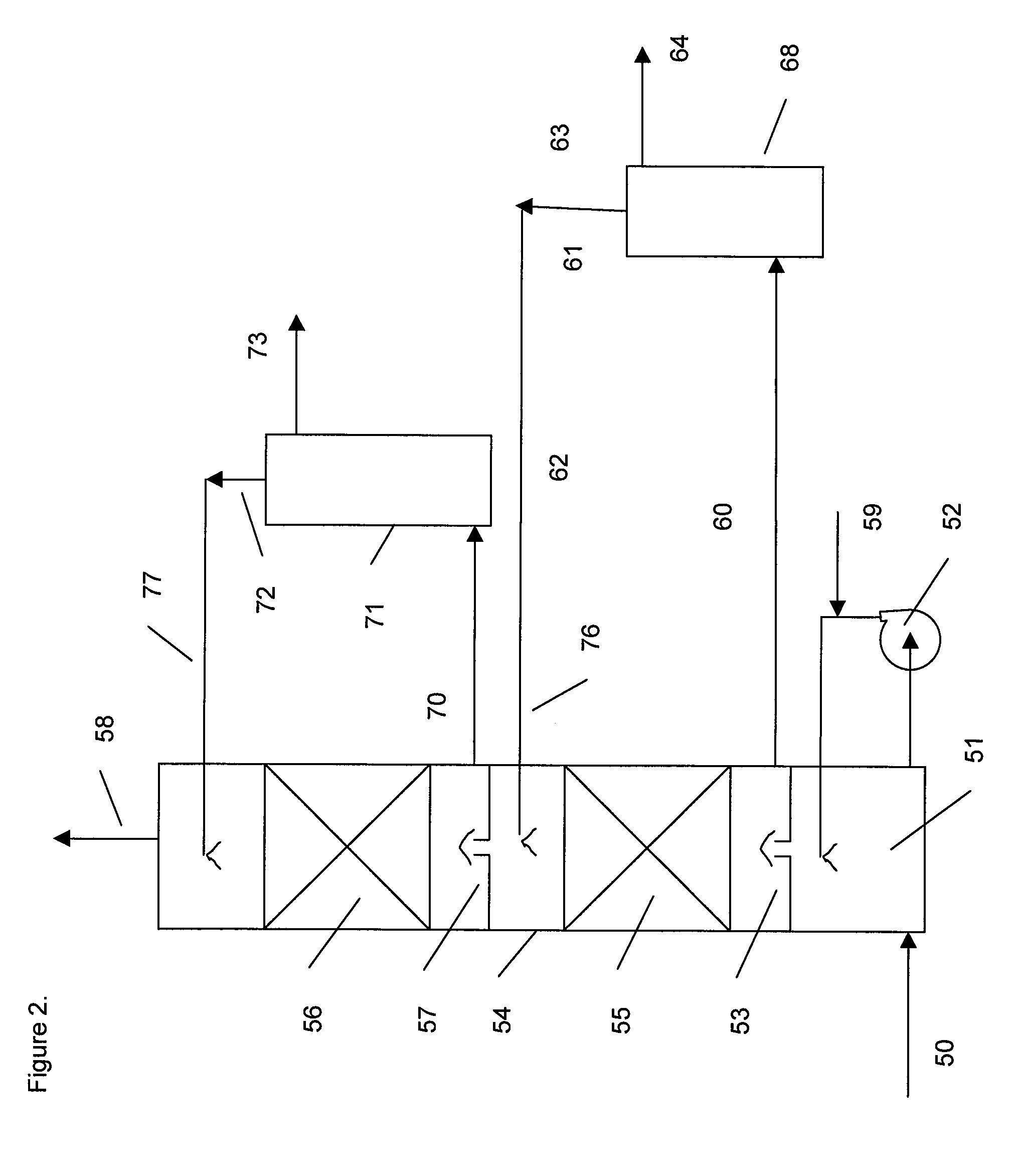Process for the recovery of carbon dioxide from a gas stream
a gas stream and carbon dioxide technology, applied in separation processes, hydrogen sulfides, sulfur compounds, etc., can solve the problems of difficult and energetically expensive regeneration, high energy consumption, and high energy consumption of each technology, so as to reduce the total energy input, reduce steam utilization, and reduce the effect of energy consumption
- Summary
- Abstract
- Description
- Claims
- Application Information
AI Technical Summary
Benefits of technology
Problems solved by technology
Method used
Image
Examples
example 1
[0070]In order to determine the maximum loading capacity of various amine absorbents, aqueous solutions of the amines were sparged at 50° C. with CO2 containing gas using a sintered glass bubbler, until the weight of the sample was constant. The results for the loading capacity in terms of moles CO2 per mole of amine that are set out in Table 1 were obtained.
[0071]
TABLE 1StaticLoading 50° C.ConcentrationCO2Moles CO2 / aminepKa% wt.% vol.mole aminePiperazine9.5 5.620100 0.91MW 8650200.7520120.66Monoethanolamine9.525120.46MW 61Triethylethylenediamine9.9 6.820120.7MW 144N,N′-Bis(2-9.2 6.320120.6hydroxyethyl)ethylenediamineMW 146N-(2-hydroxyethyl)piperazine8.9 4.340120.55HEP MW 130Di-isopropanolamine8.720120.38Triethylenetetramine9.9 9.2 6.730121.84TETA MW 1463.3Trimethylenedipiperidine10.9 10.910foamingfoamingTMPMW 2101,3-10.2 10.230120.85bis(aminomethyl)cyclohexaneMW 142N,N′-bis(tert-butyl)10.4 7.5Not solubleethylenediamineMW 172Diethylenetriamine9.9 9.130121.01(DETA)4.3MW 103Tetraethyl...
example 2
[0073]A bench scale pilot unit was operated to measure the dynamic performance of various amine solutions in water. A feed gas supply at a rate of 2 liters / minute from gas cylinders of air, nitrogen and carbon dioxide was regulated to produce a gas mix comprising 12% carbon dioxide. The feed gas flowed into a 3-neck flask with a one-inch diameter glass absorber column mounted in the central neck. The flask contained a magnetic stirring bar and was immersed in an oil bath on a stirring hotplate. The oil bath was maintained at 50° C. The 1 inch outside diameter glass absorber column was filled with 0.16 inch 316 SS Porapak™ saddle packing to a height of 12 inches. The top of the column had a scrubbed gas outlet and a lean solvent inlet. Rich solvent from the three-neck flask was pumped to the top of the regeneration column with a variable speed pump. The regeneration column comprising five sieve trays had a rich absorbent inlet near the top and a reflux condenser with an off gas outle...
example 3
[0077]The effect of sulfur dioxide derived species on the stability of primary amine solutions was tested by the addition of 1 % wt. of Na2SO3 and 0.2% of Na2S2O3= to a DETA primary amine CO2 removal solution that without the additives showed stable CO2 removal performance. With the additives, CO2 removal under test conditions similar to that used in Example 2 showed a decrease in removal from 74% at the start to 53% after 47 hours of operation.
PUM
| Property | Measurement | Unit |
|---|---|---|
| pKa | aaaaa | aaaaa |
| pKa | aaaaa | aaaaa |
| pKa | aaaaa | aaaaa |
Abstract
Description
Claims
Application Information
 Login to View More
Login to View More - R&D
- Intellectual Property
- Life Sciences
- Materials
- Tech Scout
- Unparalleled Data Quality
- Higher Quality Content
- 60% Fewer Hallucinations
Browse by: Latest US Patents, China's latest patents, Technical Efficacy Thesaurus, Application Domain, Technology Topic, Popular Technical Reports.
© 2025 PatSnap. All rights reserved.Legal|Privacy policy|Modern Slavery Act Transparency Statement|Sitemap|About US| Contact US: help@patsnap.com



